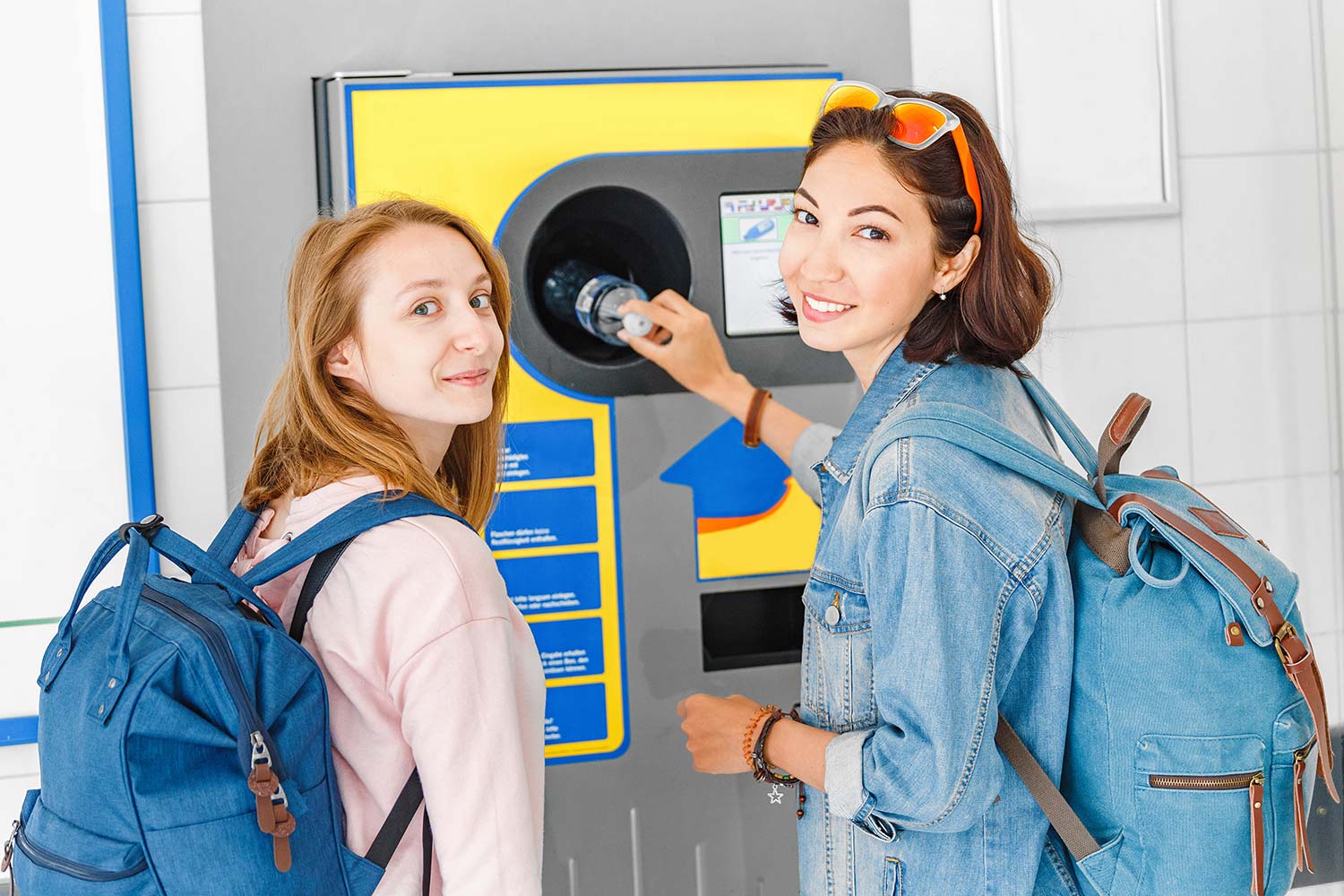We need your bottles back
PET can be made of fully recycled content
90% collection of PET bottles by 2029 is achievable
By 2025 at least 25% rPET will be used in bottle production
Can we have bottle-to-bottle recycling?
PET is fully recyclable and is already one of the most collected packaging products for recycling, far above other plastics. But it could be better still. Why shouldn’t we aim to get every PET bottle and container collected for recycling?
The EU’s target of 90% collection of PET bottles by 2029 is a clear and achievable objective. In Germany, deposit schemes see up to 97% of PET bottles being collected for recycling and the gap to 100% is getting smaller. We all want to eliminate waste and preventing the incineration or landfilling of valuable PET can massively improve the sustainability of our packaging.
Given PET’s superior performance and lower related emissions than alternative packaging products, we should be making the most of this unique material. We want to use more and more recycled PET (rPET) in our bottles and by 2025 at least 25% rPET will be used in bottle production.
It is already possible for PET to be made of entirely recycled content and the technology and capacity exists for a bottle-to-bottle recycling process that can be done over and over again, meaning we can continue to enjoy the products we love and need without endangering our environment.

How your PET bottles are collected for recycling?
It doesn’t matter how recyclable something is if doesn’t end up being recycled. The PET industry recognises this and has invested heavily in recycling. Our facilities stand ready to recycle an additional 11 billion bottles per year, but we need our bottles back so they can be turned into more bottles.
The key to success here is collection. Currently around 58% of bottles are collected for recycling across Europe, which can and should be improved. Nearly two in three bottles collected for recycling is progress, but some European countries have collection rates that are much lower. Meanwhile, there are countries that are already collecting 9 out of 10 PET bottles. So, why are some countries so much better at recycling?
If the key to successful PET recycling is collection, then one of the keys to successful collection is deposit return schemes (DRS). These schemes are already improving collection rates across Europe and are often heavily funded by the PET industry due to their effectiveness.
Essentially, DRS involve consumers paying a small deposit as part of the cost when buying products in recyclable packaging. The consumer then gets the deposit back when they return the empty packaging. All retailers who sell these products are required to operate a return point, but the true success of these schemes is often down to the operation of voluntary return points at sites such as shopping centres, transport hubs and other public spaces. This must also be supported by widespread collection in homes and streets that makes the process as convenient as possible for consumers. The results are clear, give people a small incentive and easy access to recycling and they will use it.

How we can all play a role in recycling PET plastic?
The move to more sustainable packaging is already underway as brands begin to eliminate less-recyclable plastics from their products. In the meantime, it is important for industry to provide information for consumers, so they have the confidence to separate and recycle effectively and make more sustainable choices by opting for more recyclable packaging. You can spot products packaged in PET by looking for the #1 symbol. Choosing PET and recycling it is the most sustainable choice.
Getting to the EU’s 90% collection target and beyond to the aim of total bottle-to-bottle recycling will require a concerted effort from us in the industry, from our governments, and from you the consumer. We all have a part to play in creating a more sustainable future. Let’s end waste. Recycle the #1.
